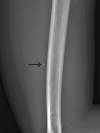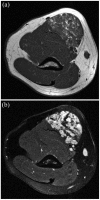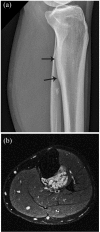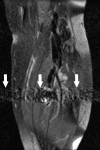Intramuscular hemangiomas
- PMID: 24427416
- PMCID: PMC3752185
- DOI: 10.1177/1941738112470910
Intramuscular hemangiomas
Abstract
Context: Intramuscular hemangiomas are common in the general population and often present at medical and surgical clinics. Unfortunately, unfamiliarity with these lesions has led to a high percentage of misdiagnoses, inappropriate workup, and unnecessary referrals.
Evidence acquisition: A literature search was performed using Medline, Embase, PubMed, and Cochrane. The relevant articles and referenced sources were reviewed for additional articles that discussed the epidemiology, pathophysiology, investigation, and management of intramuscular hemangiomas. Clinical experience from experts in orthopaedics, musculoskeletal pathology, and musculoskeletal radiology was compared. The selected case studies are shared cases of the authors.
Results and conclusion: The pathophysiology of these lesions is not completely understood, but much can be implied from their underlying vascular nature. Isolated lesions are benign tumors that never metastasize but tend to enlarge and then involute over time. Magnetic resonance imaging is the imaging modality of choice. If a systemic disorder or malignancy is not suspected or has been ruled out, conservative management is the treatment of choice for most intramuscular hemangiomas.
Keywords: hemangioma; intramuscular hemangioma; muscle lesions; vascular malformation.
Conflict of interest statement
The authors report no potential conflicts of interest in the development and publication of this manuscript.
Figures





References
-
- Allen PW, Enzinger FM. Hemangioma of skeletal muscle: an analysis of 89 cases. Cancer. 1972;29:8-22 - PubMed
-
- Beham A, Fletcher CD. Intramuscular angioma: a clinicopathological analysis of 74 cases. Histopathology. 1991;18(1):53-59 - PubMed
-
- Bella G, Manivel J, Thompson R, Clohisy D, Cheng E. Intramuscular hemangioma: recurrence risk related to surgical margins. Clin Orthop Relat Res. 2007;459:186-191 - PubMed
-
- Buetow PC, Kransdorf MJ, Moser RP, Jelinek JS, Berrey BH. Radiologic appearance of intramuscular hemangioma with emphasis on MR imaging. AJR. 1990;154:563-567 - PubMed
LinkOut - more resources
Full Text Sources

